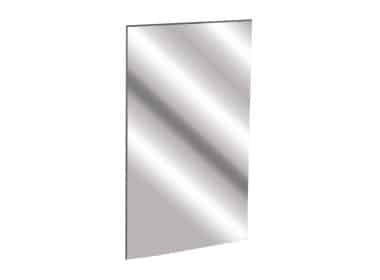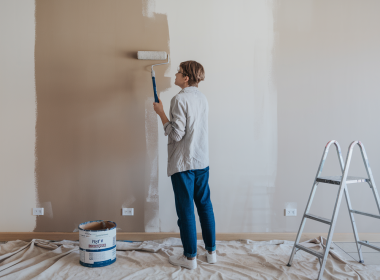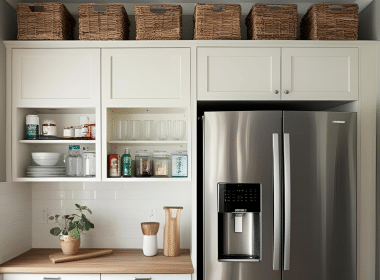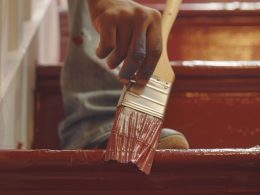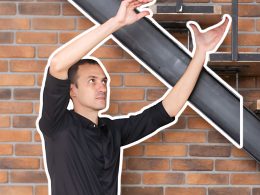For safety, stair railings are necessary since they offer support and deter falls on staircases. They improve accessibility, particularly for young people, the elderly, and people who have mobility issues. They are essential to both residential and business environments because of their unique blend of elegance and function.
Choosing the right stair railing is crucial for both the aesthetics and safety of your home. A well-selected railing not only enhances the visual appeal of your staircase but also provides the necessary support and stability.
Key Guidelines for Choosing Durable Stair Railing
With its exquisite range of stair railings, VEVOR transforms standards for home décor, making it stand out as a refined pioneer in interior design. By evaluating these factors, you can choose a railing that not only enhances the aesthetics of your staircase but also provides long-lasting safety and functionality for your home. Here are major tips to help you select a durable stair railing that combines functionality, durability, and style:
Consider Material Options

Metal railings, such as stainless steel, wrought iron, or aluminum, are known for their durability and low maintenance. Wrought iron adds a traditional, ornamental touch and can be customized with intricate designs. Hardwoods like oak, mahogany, and maple are preferred for their strength and durability.
Glass railings are ideal for modern homes but require regular cleaning to maintain their transparency and shine. Composite railings require less maintenance than wood and are a good option for outdoor stairs.
Evaluate Safety Standards
Ensure that the stair railing you select complies with local building codes and regulations. These codes dictate the height, spacing, and structural requirements for railings to ensure safety.
Consulting with a professional or referring to local guidelines can help you choose a railing that meets these standards. Consider the load-bearing capacity of the railing. This is especially important in homes with children, elderly individuals, or high foot traffic.
Match the Railing Style with Home Design

Choose a railing style that complements your home’s architectural design. For traditional homes, wood or wrought iron railings with ornate details may be more suitable.
Modern homes may benefit from the clean lines and minimalist designs of metal or glass railings. The color and finish of the railing should coordinate with the surrounding decor. Opt for finishes that blend with or accentuate the color palette of your home.
Assess Installation Requirements
Some railing materials and designs may require professional installation due to their complexity or weight. For example, glass panels or custom metal railings often need precise measurements and specialized tools for installation.
Professional installation ensures that the railing is securely and correctly fitted. If you prefer a DIY approach, consider railing systems designed for easy installation.
Prioritize Maintenance Needs
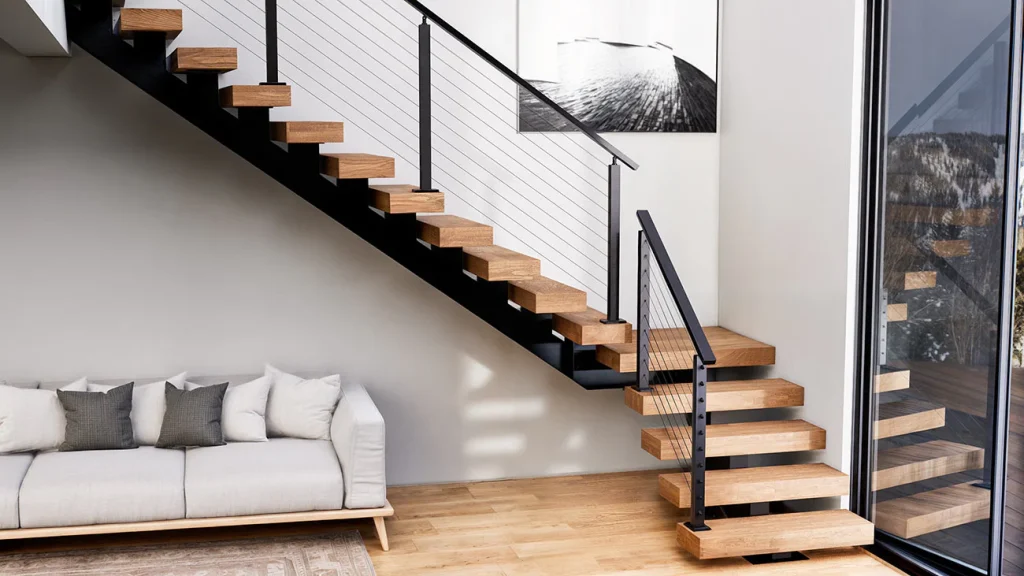
Different materials have varying maintenance requirements. Metal railings generally need less upkeep compared to wood, which may require regular sealing, staining, or painting.
Glass railings need frequent cleaning to keep them free of smudges and dust. Consider the long-term durability of the railing material. Investing in durable materials can reduce the need for frequent replacements or repairs.
Consider Environmental Exposure
Determine whether the railing will be used indoors or outdoors. Outdoor railings need to withstand weather conditions, such as rain, UV exposure, and temperature fluctuations. Materials like stainless steel, aluminum, and composite are ideal for outdoor use due to their resistance to corrosion and weathering.
For homes in coastal or humid areas, select materials that resist rust and corrosion. Proper sealing and maintenance can help protect wood railings in such conditions.
Factor in Budget

Evaluate the cost of materials and installation against the long-term value and durability. While some materials may have a higher initial cost, their longevity, and low maintenance requirements can provide better value over time.
Consider whether these custom features are essential or if simpler, more cost-effective options can achieve the desired look and functionality.
Seek Expert Advice
Consulting with architects, builders, or interior designers can provide valuable insights into selecting the right railing.
They can offer recommendations based on your specific needs, budget, and design preferences, ensuring that you choose a railing that fits seamlessly into your home.
Feedback from other homeowners can highlight potential issues or advantages, helping you make a more informed decision.
Final Remarks
Stair railings enhance a home’s visual appeal in addition to providing safety by allowing for architectural expression and harmonizing with the overall design. Whether for a traditional or modern setting, the right stair railing can add value, style, and security to your living space. We only hope you will find this informative article to be interesting to read.


